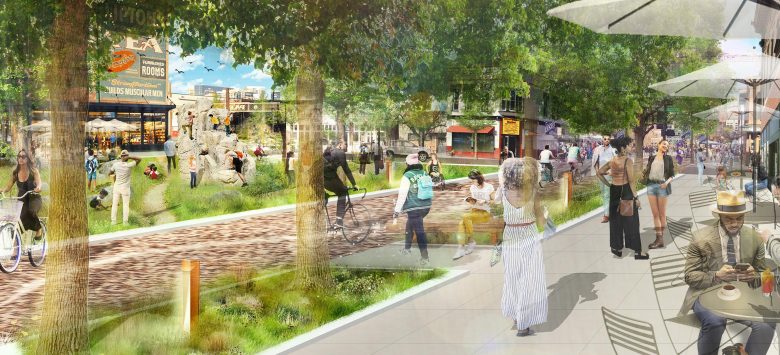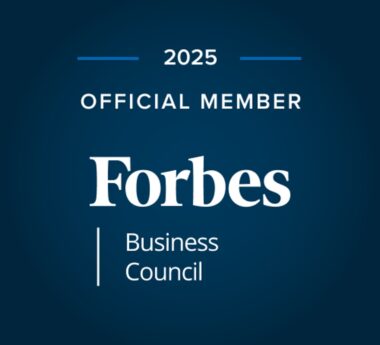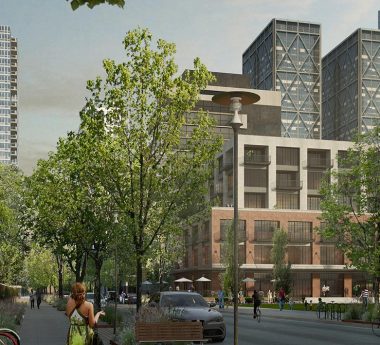Written by Mark Johnson, this article was originally published as a Forbes Business Council post on February 3, 2025.

Like most years, 2024 has taught us many lessons. To me, a landscape architect, the most critical lesson is one we’ve actually been learning the hard way for decades: We must act to adapt our infrastructure for the increasingly harsh realities of our changing climate. This year has proved we need to act now.
The unparalleled devastation from fires in and around Los Angeles is horrific to witness. And we’re no longer just talking about wildfires in California, floods in Florida and droughts in Colorado—though of course, these are still happening with increasing severity. This past year we’ve also witnessed hurricane devastation in the mountains of western North Carolina. Wildfires in New Jersey. Floods in New Mexico. And 2024 is on track to be the world’s hottest year on record.
The Urgent Need For Collective Action
We need to demand more nature-based solutions that help to heal our planet and, more critically, help to protect our own human health and well-being. And we professionals, who work closely with policymakers, governments, nonprofit organizations, private institutions, philanthropists, allied professionals as well as the public, must commit to taking action without compromise.
Here are examples of tangible solutions that can be implemented today:
Planting More Urban Trees To Absorb Greenhouse Gasses And Cool City Centers
Consider programs like San Francisco’s Urban Forest Plan, which established a strategy to improve and maintain the health of the city’s trees, including 50,000 new ones. In 2016, voters overwhelmingly supported a proposition to fund the program with tax dollars. In Detroit, more than 75,000 trees will be added to the city by 2027 through the Greening of Detroit program, which has received federal funding through the Inflation Reduction Act.
The Integration Of Green Infrastructure
Rain gardens, bioswales and greenways can absorb and safely convey floodwaters to protect people and property. They naturally filter the water before it flows back into creeks, streams and rivers.
Look at large-scale examples like the Greater New Orleans Urban Water Plan, launched in 2010 to address the long-term management of stormwater, surface water and groundwater in a regionally specific and resilient way, by acknowledging the city’s need to embrace water more naturally rather than fight to control it. The irony is that letting the water in actually reduces flooding.
At a smaller scale, bioswales can be added to almost any urban sidewalk. In 2011, four were installed in Brooklyn’s Boerum Hill neighborhood and, through New York City’s Green Infrastructure Plan, hundreds more have been installed in the years since. It’s estimated that this natural process keeps more than 8 million gallons out of the sewer system each year.
Adding Parks And Landscapes That Reduce Heat And Carbon
The Atlanta Beltline is a great example, with 22 miles of trails and 1,300 acres of greenspace now thriving where industrial railroad tracks had previously looped the city. Today, the massive redevelopment has had a positive impact on Atlanta’s environmental footprint and health by increasing tree canopy, green space and green infrastructure, and reducing the reliance on vehicles.
Downtown Denver’s 5280 Trail is similarly designed to be a safe, beautiful ribbon—literally a 5.280 mile multimodal trail—that, when complete, will soften the city through the creation of green space and the reliance on natural materials and indigenous landscapes. This not only improves the urban experience for people, but it also improves water capture, water quality, urban heat, shade, pollinator habitats and more.
Today’s cities need networks of many small parks—green spaces that are visible and accessible from every neighborhood and easily reached within a few minutes’ walk. Rethinking urban design and retrofitting our urban spaces with more trees, green infrastructure and parks can boost sustainability, economy, physical health, mental health and more. This not only helps us adapt to climate change, it also ensures our neighborhoods are better prepared for future disasters, whether they’re naturally occurring or manmade.
The Road Ahead For Businesses
Leadership is the key to bringing these pressing needs into reality. Design professionals have a role to play, but the business community can play a critical role as well. One first step is to ask your own leadership if there is an actionable nexus between the work of your company and climate challenges. Are there issues in your supply chain, logistics, products or applications that could better align to mitigate risks? Are there initiatives, partnerships or alliances that could improve the climate resiliency of your customers or the communities you serve?
Our work causes us to routinely engage in community and stakeholder discussions about community issues and needs. Communities today are more engaged and vocal than ever, but in my experience, the voice of business alone might not speak up, engage or provide ideas for all problem types. In community planning, the business community is often more silent. Business leaders may have access to institutional and elected leaders, but those connections are often not visible to the public. With this in mind, it’s important to find a way to make your ideas known, to bring your rational, balanced business view to support community initiatives that help find solutions.
Through the American Society of Landscape Architects (ASLA) Climate Action Plan, our industry is committed to be a net-zero profession by 2040, including our business operations, all of our designs, as well as the materials and products that are used within them. We will continue to be focused on this. But we can’t do this alone. Across the country and around the world, all of us are feeling the impact of climate change, and the next devastating fire or flood is not a matter of “if,” it’s “when.” This is no longer about the legacy we’re leaving for our children and grandchildren. We must all act today to protect our communities, our neighbors and ourselves.


